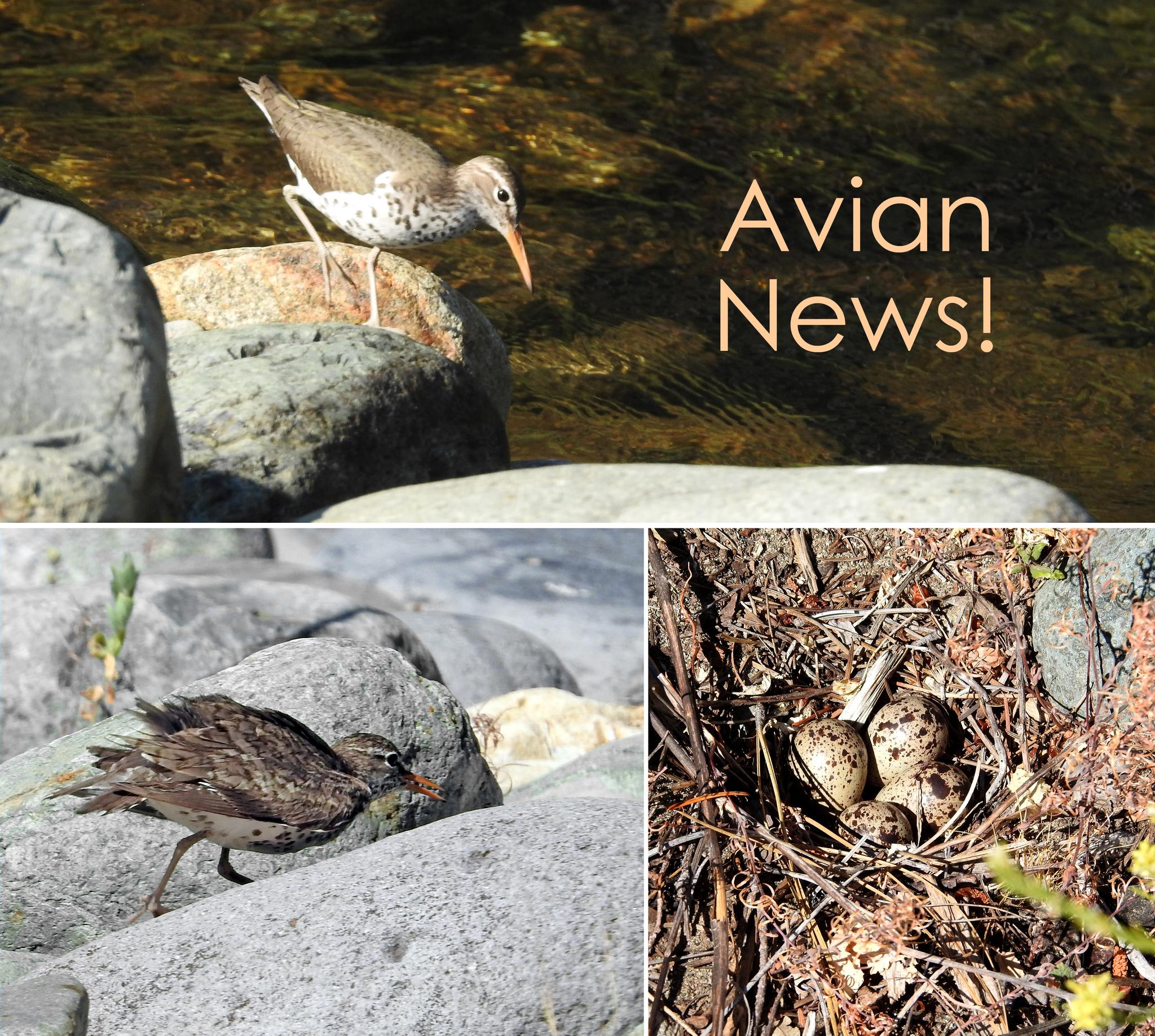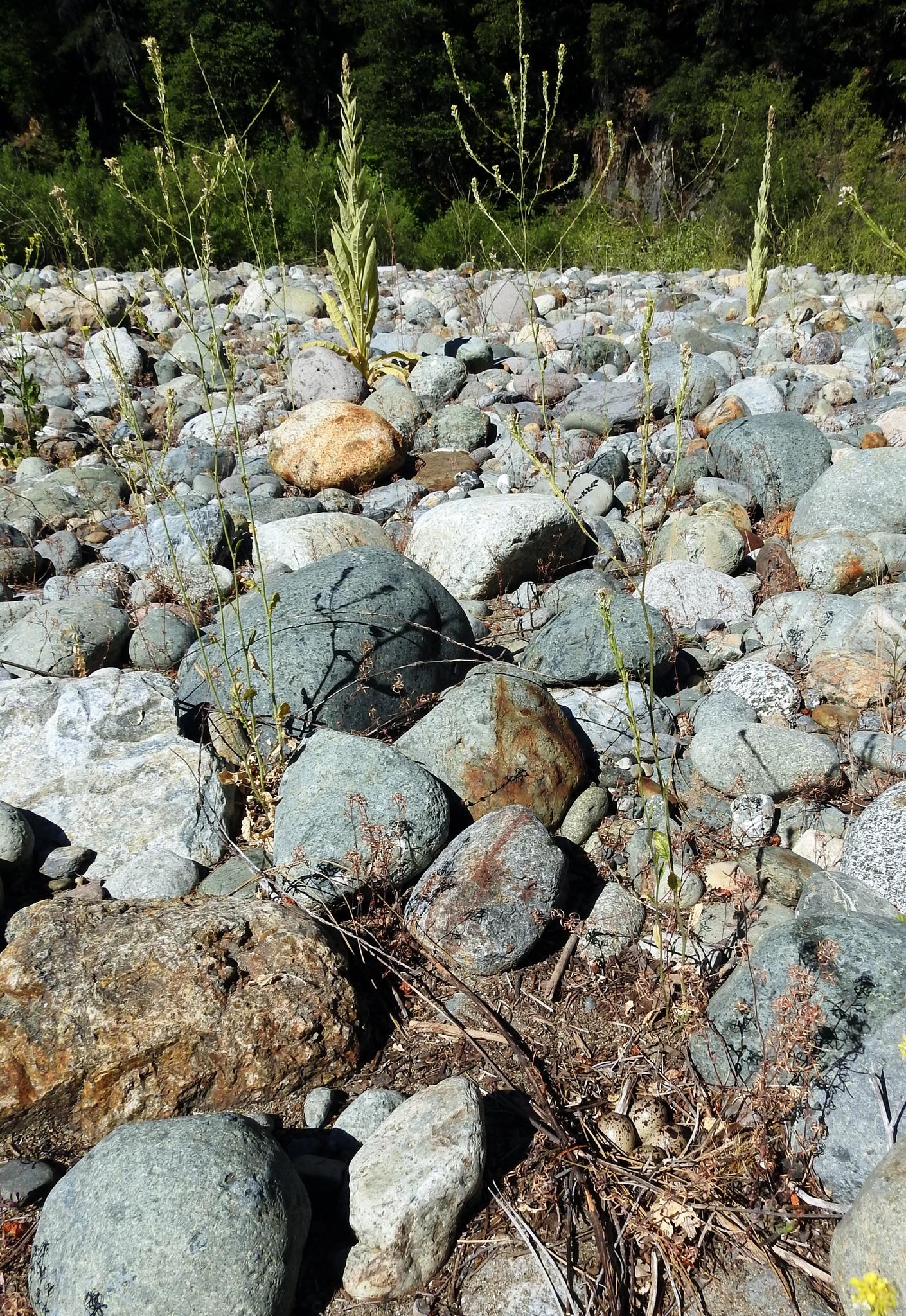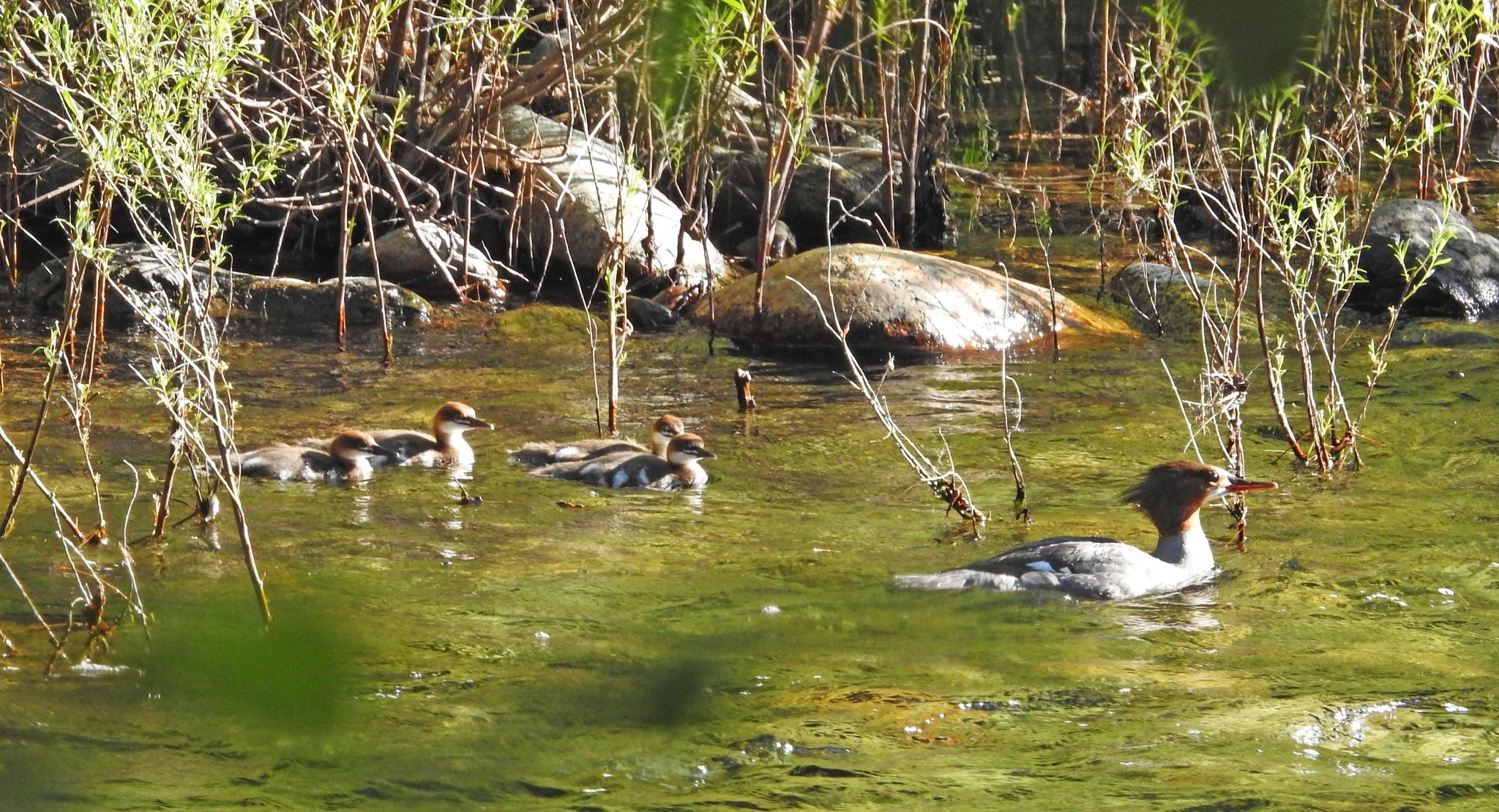
Spotted Sandpiper (adults) and nest with eggs — Actitis macularia
There are several Spotted Sandpipers on the North Yuba River right now. They are quite unusual in their breeding and nesting habits. The females usually arrive before the males, in the Spring. The females practice polyandry and will mate with up to 3 different males, if they are available. However, some females are monogamous, and will mate with only one male. Competition between females can be quite aggressive, if the male population is low. The nests are begun by the females and finished by the males. The nests are built on the ground, in the shade of shrubs, and about 100 yards from the shore. Each mated male will have it’s own nest. The males brood 3-5 eggs for 19-22 days, and protect the baby birds when they hatch. The females may help with the care of the baby birds, if they only have one mate. The young birds are born precocial, and can walk and feed themselves within hours!!! Their main food is flying and aquatic insects. They are able to fly within 18 days! Wow!

Spotted Sandpiper nest
I came across this Spotted Sandpiper nest just this week! It was located on a boulder field along the North Yuba River. I startled an adult Sandpiper off the nest. As it ran off, I noticed its tail feathers were all spread out. Perhaps it was shading or protecting the eggs with its feathers! I’ll go back in another week and see if the eggs have hatched! How exciting!

Common Merganser (female) and four ducklings — Mergus merganser
I’ve been looking for Common Mergansers with ducklings on the river lately, and just this week I spotted a mom with four ducklings! Yay! It is always wonderful to see nature taking its natural course!
The average brood size of the Common Merganser is 9-12, but they have been known to have as many as 17 ducklings! I was amazed to see the group of 16 little ducklings! Within 1-2 days after the ducklings leave their nest, they are capable of swimming, diving, and feeding on their own! The mom will stay with them for approximately 2 months, warding off predators such as minks, otters, foxes, and herons! In the Fall, they will migrate to southern California or Arizona for the winter.

Western Tanager (male-female) — Piranga ludoviciana
In the past two weeks the Western Tanagers have arrived! These unbelievably colorful birds migrate all the way from Costa Rica, to breed and raise their young here! The Western Tanager is a great example of sexual dimorphism! The males are brilliantly colored to attract the females. The females are plainly colored, and blend in with their surroundings. This camouflaged coloring is advantageous for a female sitting on a nest!
Your questions and comments are appreciated. Please feel free to email me at northyubanaturalist@gmail.com. Thanks!
Featured Articles

2025 Fourth of July Street Race Results Are In! →
July 9, 2025
Downieville’s annual 4th of July street races saw enthusiastic participation across all age groups.
Newsom Signs Housing and Development Streamlining Bills →
July 2, 2025
23-Year-Old Dies in Collision Near Grass Valley →
June 30, 2025
Tahoe National Forest Enters Stage 1 Fire Restrictions →
June 30, 2025
Sierra County Sheriff Recognized on Congressional Honor Roll →
June 25, 2025